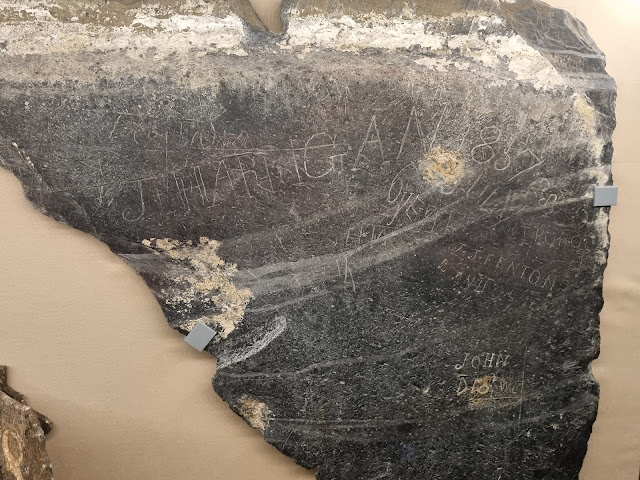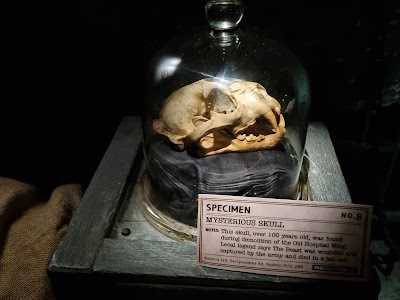On my recent trip to Cornwall I dragged my family to Pendennis Castle near Falmouth. I certainly enjoyed the trip, not too sure about my wife and 2 daughters though?
Now its your turn......
Pendennis Castle was built from 1539 to 1545 when England faced a possible invasion from the united powers of Catholic Europe. To defend against this, Henry VIII implemented a national programme of military and naval preparations, including new coastal artillery forts. These were equipped with guns to shatter enemy warships and troop transports that might attempt to capture English ports.
The important anchorage of Carrick Roads, a deep estuary at the mouth of the river Fal, was a perfect location for an enemy to establish a base. To protect it, Henry built gun forts on opposite shores, at Pendennis and St Maws. Pendennis Castle had a circular design that allowed all-round fire from guns mounted at several levels.
The fort was fully garrisoned (guarded) by up to 100 men only when there was an imminent threat, notably during the planned Spanish invasions of 1574, 1579, 1588 (the ‘Great Armada’) and 1596–7. On the last occasion, a Spanish fleet intended to land troops at Pendennis and capture Carrick Roads. The attack never came, but the threat forced Elizabeth I to review the defences.
The fort was fully garrisoned (guarded) by up to 100 men only when there was an imminent threat, notably during the planned Spanish invasions of 1574, 1579, 1588 (the ‘Great Armada’) and 1596–7. On the last occasion, a Spanish fleet intended to land troops at Pendennis and capture Carrick Roads. The attack never came, but the threat forced Elizabeth I to review the defences.
In 1597 the soldiers and courtiers Sir Nicholas Parker, Sir Ferdinando Gorges and Sir Walter Raleigh surveyed the defences of Pendennis. By 1600, the engineer Paul Ive had enclosed Henry VIII’s castle within a much larger fortress to defend the whole of Pendennis headland. It was an elongated pentagon in plan, defined by a high rampart and ditch, with a bastion projecting at each angle.
A large triangular area of the new fortress (a salient) overlooked Pendennis Point, where a smaller fort included the earlier gun tower known as Little Dennis. The bastions had heavy guns to protect against attack by land and sea. They also defended the fort against a close assault by land, to which the circular form of Henry VIII’s castle was vulnerable..
Between 1625 and 1630 England made a catastrophic attempt to influence the course of the Thirty Years War in continental Europe, mainly in opposition to Spain. This prompted improvements to Pendennis and in 1627, the engineer Sir Bernard Johnson constructed a new rampart and ditch (the Hornwork) across the peninsula, replacing a neglected Tudor earthwork and strengthening the land defences to the north.
Pendennis was tested during the First Civil War (1642–6), when Falmouth was an important port for King Charles I’s army. In 1646 Pendennis was one of the last Royalist strongholds to hold out against the Parliamentary army; about 1,000 soldiers and their dependents endured a five-month siege, agreeing an honourable surrender in August when their food supplies ran out.
Although there were no major events at Pendennis after 1646, continuing warfare with the Dutch and the French ensured that a small garrison was maintained, on and off, and a new guard barracks and gateway built in about 1700.
In 1714, coastal defences were reviewed, and the engineer Colonel Christian Lilly reported Pendennis ‘neglected’ and ‘in a very ruinous condition’. His recommendations for repairs were implemented from 1732 to 1739; the old rampart was re-formed, new guns were installed, and new buildings erected, including a storehouse, gunpowder magazine (store) and gunners' barracks.
From 1775 to 1780, in the American War, the locally raised Miners’ Militia garrisoned Pendennis and new barracks were built. During the long wars with Napoleonic France (1793–1815) the garrison became permanent and the defences were strengthened by five raised gun batteries (cavaliers) on the rampart overlooking the landward approaches. A new sea battery, Half Moon Battery, was built outside the fort on the south, while a host of barracks, a hospital and store buildings were erected both inside the fortress and on Hornwork Common to the north.
After the defeat of Napoleon at Waterloo in 1815, Pendennis was neglected and many of the temporary buildings were removed. By the late 1850s, however, England and France were rivals again in a race for military and naval advantage. More powerful guns were installed at Pendennis from 1854,notably at Half Moon Battery and at Crab Quay, on the east side of the headland.
Yet the fortress received little attention in the nationwide programme of fort-building in the 1860s, being considered a lower strategic target for the enemy than many other locations around the coast.
Nonetheless, the outdated defences were gradually improved from 1880 to 1900, a period of revolutionary change in military technology. The first major development was a submarine minefield laid across the entrance to Carrick Roads in 1885, with mines that could be detonated remotely.
But it was Falmouth’s designation as a Defended Port in 1887 that resulted in many new defences for the estuary, commanded from Pendennis Castle. These comprised breech-loading guns (replacing the older, muzzle-loading guns), accurate range-finders, searchlights to aid night fighting and telephones and electricity to enable efficient communication. Six-inch guns – those firing sizeable shells with a six inch diameter – were intended to engage warships from new positions in One Gun Battery inside Pendennis and from Half Moon Battery, while light quick-firing 6- and 12-pounder guns to counter fast torpedo boats were fitted in East Bastion, Carrick Mount Bastion and Crab Quay.
Such intricate defences required a permanent staff and in 1902 new barracks were built at Pendennis for the 105th Regiment Royal Garrison Artillery. Many other new buildings included a War Signal Station on the roof of the Henrician castle to control shipping movements.
During the First World War (1914–18) Pendennis was the command centre of coast artillery defences for west Cornwall.Key defence points and trenches protected it and thousands of troops came for training before going to war in France and Belgium. The Royal Navy used the anchorage for convoys, minesweepers and anti-submarine vessels.
In 1939 Pendennis resumed control of coast defences. The threat from torpedo boats was countered by twin 6-pounder and 12-pounder guns, while long-range defence against ships came from guns in new covered positions at Half Moon Battery. From 1943 these were the latest 6-inch mark 24 models, operating with precision under radar control. Huts and temporary buildings were erected, the Pendennis Fire Command Post enlarged (from which the Fire Commander could control all his guns), and a Battery Plotting Room was established to co-ordinate target data coming from all sources.
The Barracks
All of the next photos were taken from the displays in the barracks.


































































